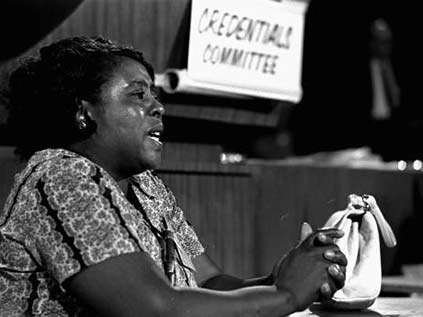Seven Hidden Figures from Black History
There is a very popular Oscar nominated movie called Hidden Figures, which recounts the true story of several African American female mathematicians (Katherine Johnson, Mary Jackson, and Dorothy Vaughan) who were hugely important in the early days of the American space program. Despite their contributions, these women and their stories have remained mostly unknown by the general public. And they are not the only figures in black history who have been forgotten or ignored.
Whenever February comes around, the celebration of Black History Month has a tendency to focus on the same people over and over again. Dr. Martin Luther King, Jr., Jackie Robinson, Rosa Parks, Harriet Tubman. All were incredibly important to the history of this country. However, they are far from the only African Americans that people should know about. There have been many more “hidden figures” in Black History that deserve to be remembered, and this is the perfect month to do it. Here are some individuals that you may not have heard of that have made tremendous contributions to America and should have some time in the spotlight:
Bayard Rustin (1912-1987). Everyone remembers the March on Washington. Sadly, few remember the man who was one of the primary organizers of the march. Bayard Rustin was a key figure in the Civil Rights Movement years before it started garnering the attention that it did. He instigated one of the first Freedom Rides back in 1947 and was one of the founders of the Southern Christian Leadership Conference (SCLC). One of Martin Luther King, Jr’s most important advisors, Rustin has often been overlooked because he was an openly gay man at a time when it was considered unacceptable.
Robert Smalls (1839-1915). Civil War experts might know the name of Robert Smalls, but the average American doesn’t. Smalls was a slave on a Confederate transport ship when he led an uprising that freed the people being held onboard. They would subsequently sail north to freedom. This mutiny helped lead Abraham Lincoln to reconsider the use of African Americans as soldiers in the Civil War, something many were opposed to. Smalls would later go on to serve in the United States Congress.
Lewis Latimer (1848-1928). You know that Thomas Edison created one of the first light bulbs to work. But did you know that originally his bulbs would only last a few days? This was definitely not long enough to be practical. Enter Lewis Latimer, the son of escaped slaves and an inventor in his own right, who created a filament that extended the life of the bulb. This made the light bulb cheaper and more efficient, making it possible for them to be used on the streets and in the average person’s home.
Fannie Lou Hamer (1917-1977). A voting rights advocate, Fannie Lou Hamer was fired from her job for trying to register to vote and was nearly beaten to death by police. This did not stop her, however, from helping to organize Mississippi’s Freedom Summer. She also became vice-chair of the Mississippi Freedom Democratic Party that attended the 1964 Democratic Convention in an attempt to challenge the all-white, anti-Civil Rights official delegation. Her speech to the credentials committee was carried to many parts of the country and led to more widespread support for the cause.
Bessie Coleman (1892-1926). One of 13 children born to sharecroppers in 1892, Bessie Coleman took an interest in flying after hearing the stories of pilots in WWI. Being both female and African American, she found it difficult to find anyone to train her in the US. This did not stop her, however. She simply went to France and trained there. She ultimately became the first African American woman to get both a national and international pilot’s license.
Annie Turnbo Malone (1869-1957). Many have heard about the famous business woman Madam C. J. Walker, but fewer remember the woman that she used to work for as an agent. Annie Turnbo Malone studied chemistry in school but was forced to leave because of illness. She took an avid interest in hair care and using her knowledge of chemistry created her own line of non-damaging hair care products for African American women. By the 1920s, she was a multi-millionaire and noted philanthropist.
Cathay Williams (1844-1892). Born right here in Missouri as a slave, Cathay Williams was pressed into service for the Union Army after they occupied Jefferson City in 1861. Working as a support person for the army ignited an interest in serving in the military herself. So in 1866, she enlisted as a man. She would go on to serve for nearly three years before an illness caused her gender to be revealed. Unfortunately, when she became sick later on in life and applied for a pension as a former soldier, her claim was denied despite her service.
Learning about history is something that a lot of people can find dull. This is especially true if the same stories and characters are talked about time and again. Discovering some of the many figures that lie hidden in history can make it much more interesting. Not every hero gets a frontpage headline and many remain in the shadows, but that does not lessen their contribution. This February, try reading up on the seven figures above and maybe search out even more. And always keep in mind that knowing black history is important for all Americans.


